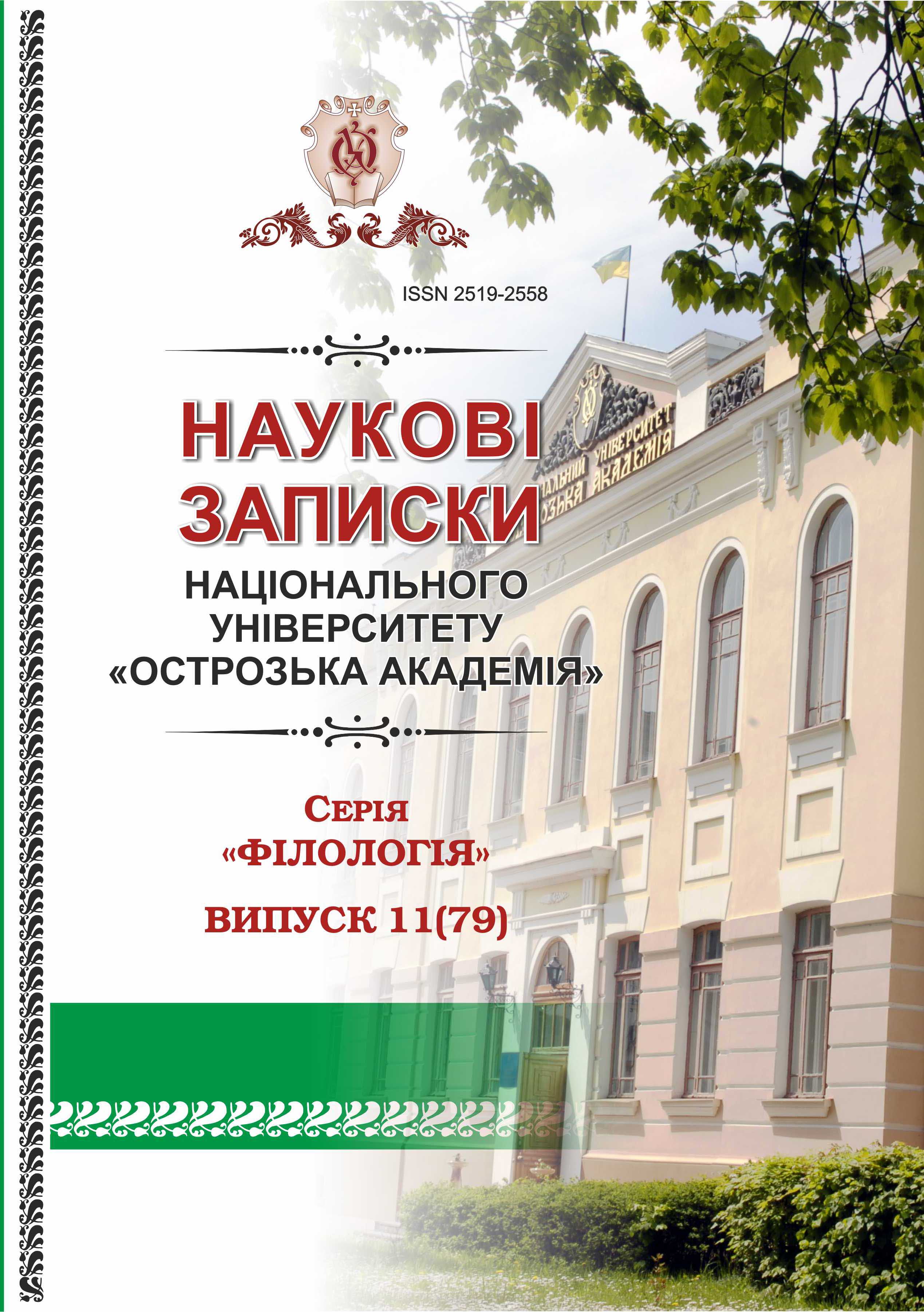STRUCTURAL AND SEMANTIC PECULIARITIES OF EMOTIONAL STATES VERBALISATION IN MODERN ENGLISH LITERATURE DISCOURSE (based on the novel by E. Gilbert ‘Eat, Pray, Love’)
Keywords:
verb, semantics, structure, syntactic construction, emotional state, emotive vocabulary, literature discourseAbstract
The article is devoted to the study of means expressing emotional states in modern English literature discourse, i.e., the novel by E. Gilbert ‘Eat, Pray, Love’. The paper outlines structural and semantic peculiarities of lexical means expressing emotional states based on 163 verbal constructions obtained by continuous sampling from the novel under analysis. Emotional and emotive vocabulary are two adjacent but not identical notions; the term ‘emotive’ belongs to the sphere of linguistics comprising multilevel lingual means of expressing emotions, i.e., a linguistic research focuses on emotive vocabulary where the verb plays a significant role as a meaningful centre of the sentence.
Verbalisation of emotional states is performed synthetically (indication of the emotional state is incorporated into the verb semantics) and analytically (emotional state is expressed through an adjective or / and noun semantics which follow the link verb).
Emotional states include means of positive, negative, and neutral states. Emotive vocabulary denoting positive emotions comprises 8 emotional states among which are love, gaiety, happiness, satisfaction, excitement, admiration, tranquillity, inspiration, with the units containing semantic component ‘love’ dominating this group and constructions denoting excitement, admiration, tranquillity, and inspiration demonstrating low productivity. Negative emotions include 7 emotional states: fear, grief, anxiety, anger, sadness, rage, anguish, where constructions denoting fear and grief demonstrate the highest productivity, and units denoting anxiety, anger, sadness, rage, and anguish show low productivity.

